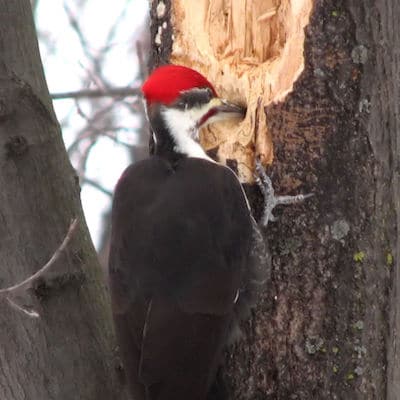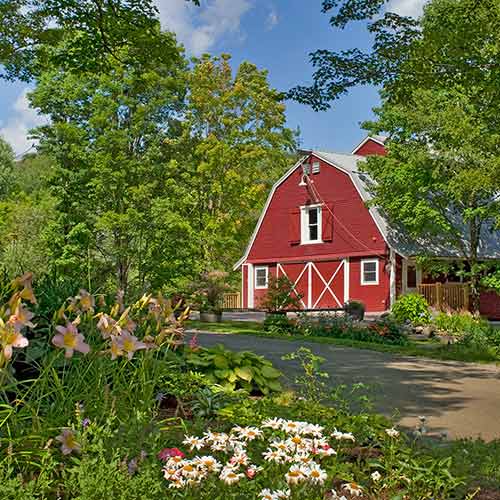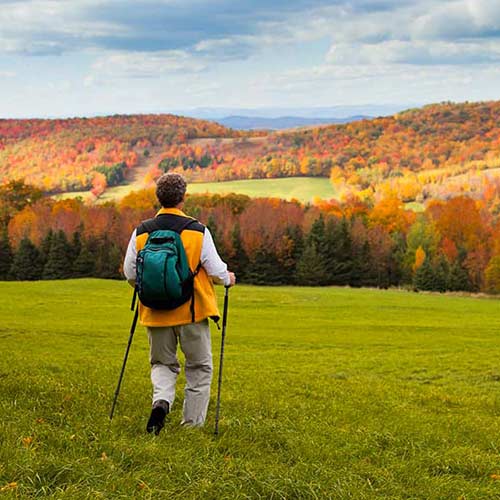
Here in Vermont wildlife abounds. We have our fair share of four- legged creatures however what is surprising is that there are also 381 species of birds that have been recorded in Vermont. Seemingly everything from the Ruby-throated Hummingbird to the Pileated Woodpecker and the Black Capped Chickadee to the Bald Eagle. Many of these birds can be found in the Mad River Valley and the Mad Birders can help you find good locations for birdwatching.
While being somewhat elusive though not an unusual winged visitor, our new neighbour is a Northern Pileated Woodpecker. We have occasionally seen him flying past but never seem to see him at work. It appears that some of our trees seem to be a source of food for Mr. NPW as the diameter of the tree does not seem large enough to have a nest-size hole.
There are currently several large holes in our tree and we noticed several other nearby trees that have had the same visitor. The pile of debris at the base of the tree is quite large as are the pieces which have fallen from the hole.
This tree is dead, thus the wood is fairly soft, but have you ever wondered if a woodpecker gets a brain concussion banging its beak all day long? The amazing fact is that the average woodpecker hits its beak against a tree at about 15 miles per hour and does this 20 times each second – about 12,000 times per day – every day of its life. Needless to say no way a person could survive this. Each year, more than 1 million people in the United States alone sustain and survive a traumatic brain injury, according to the Centers for Disease Control and Prevention. Another 50,000 people die of their injuries.
What can be learned from the woodpecker’s anatomy? A very interesting article in Forbes magazine (Jan 6, 2016) presents information about how this bird’s anatomy helps to protect its brain. The article explains that Dr. Julian Bailes, Chair of neurosurgery at NorthShore University HealthSystem and co-director of the NorthShore Neurological Institute, and his team are learning from woodpecker anatomy aspects which might help mitigate brain injuries in humans.
And so we continue to be impressed by this amazing bird in our tree and hope that if it is a nest that is being built, we will have the pleasure of seeing small woodpeckers as they learn to fly. If you are a birding enthusiast there are many opportunities for bird watching in the Mad River Valley.











